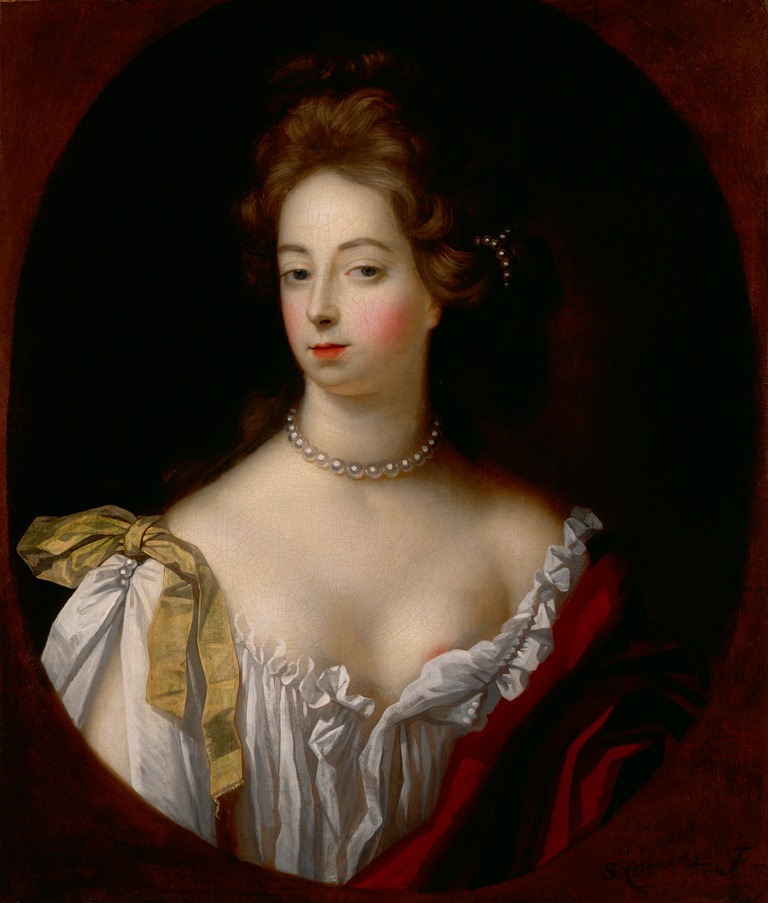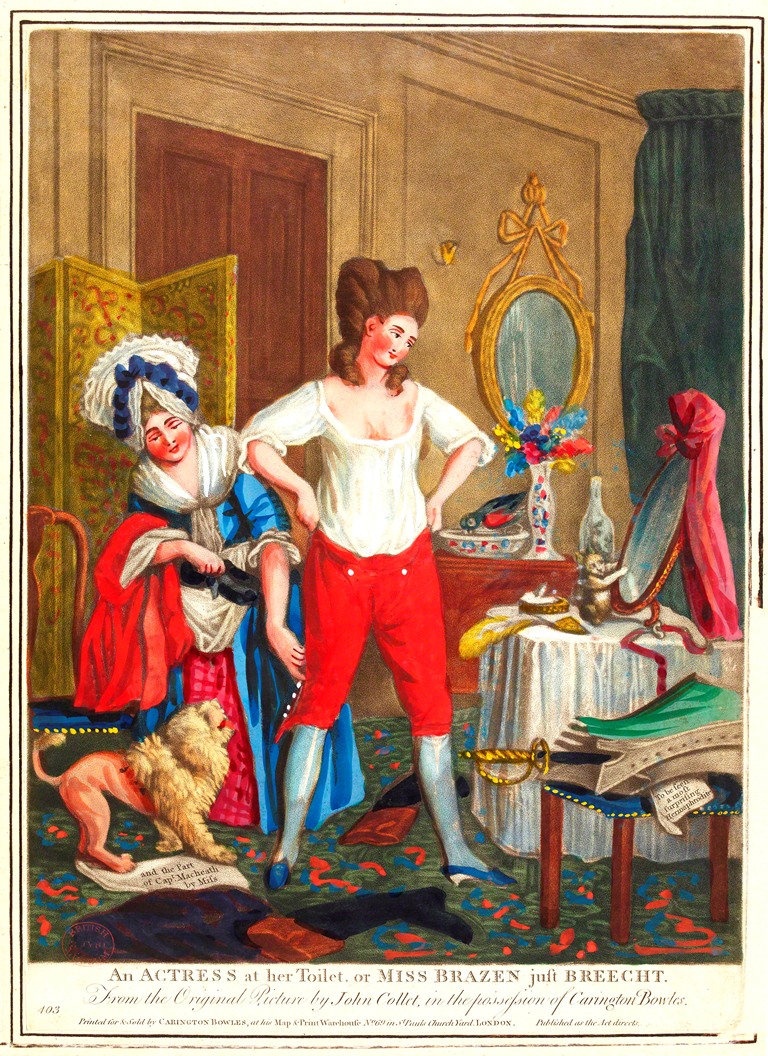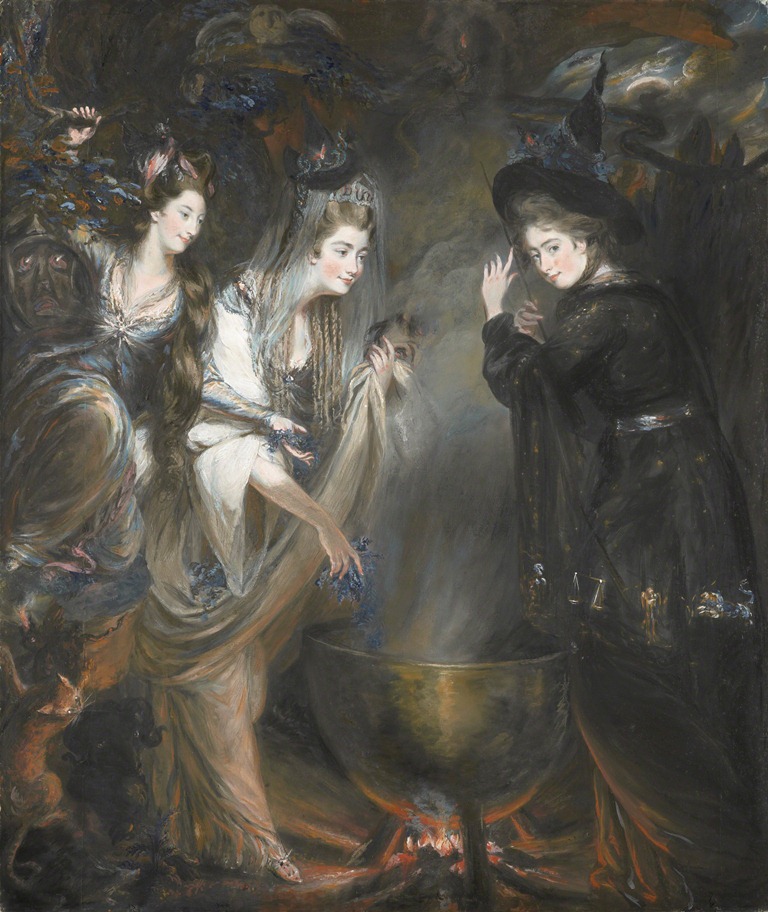What is it that makes an exhibition special, keeps you looking longer than you expected, ensures you think about it long after you’ve left? Obviously, the art, or in a history show, the subject, is the first thing. The installation sometimes (although a good show is more usually damaged by poor installation than a poor one is rescued by good). Then there are the juxtapositions, the unexpected nuggets of information, novelty, rarity.
The question arises because the National Portrait Gallery’s new show on the actresses of the 17th and 18th centuries should have everything it takes: some of the greatest names of the centuries as both artists and sitters, an interesting subject, paintings gathered from an impressively wide number of sources. And yet, somehow, it never really takes off.
The show starts rather obviously with the question of what, exactly, the word “actress” indicated to theatre-goers in the 17th century, when the Restoration of Charles II meant that, for the first time, women could perform professionally on stage. Yet the stage remained, as the Interregnum had pronounced, a morally equivocal place, and the women who worked there were regarded as “working” women; that is, prostitutes.
 The show’s curators reinforce this view with an (I suspect) unintentional weighting of the matter themselves. The room displaying images of these first actresses in fact shows two portraits of Nell Gwynne by Simon Verelst, one rather conventional one (pictured right, Nell Gwynne, c 1680, by Simon Verelst, courtesy NPG), when her acting days were long over, and one – an exciting new find that was made just in time for this show – of Gwynne with breasts exposed, which depicts therefore her role not on stage but in Charles II’s bed, as does a third image showing her with her children by the King. Then comes another royal mistress, Moll Davis, who was a singer rather than an actress, and only then, finally, come two pictures that really do have to do with the theatre: a Hogarth engraving of strolling actresses dressing in a barn, and a portrait of Hester Booth, who appeared at Drury Lane.
The show’s curators reinforce this view with an (I suspect) unintentional weighting of the matter themselves. The room displaying images of these first actresses in fact shows two portraits of Nell Gwynne by Simon Verelst, one rather conventional one (pictured right, Nell Gwynne, c 1680, by Simon Verelst, courtesy NPG), when her acting days were long over, and one – an exciting new find that was made just in time for this show – of Gwynne with breasts exposed, which depicts therefore her role not on stage but in Charles II’s bed, as does a third image showing her with her children by the King. Then comes another royal mistress, Moll Davis, who was a singer rather than an actress, and only then, finally, come two pictures that really do have to do with the theatre: a Hogarth engraving of strolling actresses dressing in a barn, and a portrait of Hester Booth, who appeared at Drury Lane.
Many of the later images, too, stress the idea of these women’s sexual availability, even if the message became somewhat more subdued. Joshua Reynolds’s lovely portrait of Frances Abington (1771) shows her, à la Christine Keeler, hoiked around backwards on a chair, her informal pose reinforcing the sexual innuendo of her pose, thumb in her mouth, not to mention the blatant symbolism of a small fluffy pet in her lap, grey-white to match her grey-white powdered hair. Hard, really, to misunderstand these messages.
Other portraits show the women dressed for their various parts. Mary Robinson was so famous as Perdita in The Winter’s Tale that she was frequently called Perdita Robinson (her brief affair with the Prince of Wales – later George IV – made her a constant in the newspapers), and the really lovely Hoppner portrait (main picture, above) of her ostensibly in the role (although in fact merely in fashionable dress) is a delight. So, too, is the portrait of Mrs Jordan, mistress of the Duke of Clarence, later William IV (say what you like about those Hanover boys, they were certainly predictable), and dressed in the sort of breeches' role for which she was famous. (An Actress at Her Toilet or Miss Brazen just Breecht After John Collett, c 1779, Courtesy, Trustees of the British Museum, pictured below.)
 Breeches parts, of course, were mainly an opportunity for men to look at women’s legs, but the show gives a more unusual gender-turnaround look, with a charming small picture by Samuel de Wilde of Henry Angelo dressed as a drunken female brothel-keeper; the caption fails to mention that Angelo was not really an actor but a fencing master, and one of the best memoirists of the day.
Breeches parts, of course, were mainly an opportunity for men to look at women’s legs, but the show gives a more unusual gender-turnaround look, with a charming small picture by Samuel de Wilde of Henry Angelo dressed as a drunken female brothel-keeper; the caption fails to mention that Angelo was not really an actor but a fencing master, and one of the best memoirists of the day.
 This may, in fact, be the problem with the show, which is that it doesn’t seem to have much interest in the sitters: we learn of their roles and their lovers, but not much else. We are told that Perdita Robinson was a minor poet, but her connection to the Duchess of Devonshire (she wore Devonshire political colours on stage) is unmentioned, even though the Duchess, in an am-dram Macbeth, is depicted in the next room in a deeply kitsch painting by Daniel Gardner (pictured left, The Three Witches from Macbeth, showing Viscountess Melbourne Georgiana, Duchess of Devonshire and Anne Seymour Damer, courtesy NPG).
This may, in fact, be the problem with the show, which is that it doesn’t seem to have much interest in the sitters: we learn of their roles and their lovers, but not much else. We are told that Perdita Robinson was a minor poet, but her connection to the Duchess of Devonshire (she wore Devonshire political colours on stage) is unmentioned, even though the Duchess, in an am-dram Macbeth, is depicted in the next room in a deeply kitsch painting by Daniel Gardner (pictured left, The Three Witches from Macbeth, showing Viscountess Melbourne Georgiana, Duchess of Devonshire and Anne Seymour Damer, courtesy NPG).
Throughout, I wanted to know more: more about Hoppner and Verelst, the quality of whose work was new to me; more about the history of the times, the painters and the paintees. Interesting themes, subjects, ideas were all latent in what was being presented, but they were never explored.
The show was perfectly good as far as it went. It just didn’t go very far.
- The First Actresses: Nell Gwynne to Sarah Siddons is at the National Portrait Gallery until 8 January, 2012









![SEX MONEY RACE RELIGION [2016] by Gilbert and George. Installation shot of Gilbert & George 21ST CENTURY PICTURES Hayward Gallery](/sites/default/files/styles/thumbnail_125_x_125_/public/mastimages/Gilbert%20%26%20George_%2021ST%20CENTURY%20PICTURES.%20SEX%20MONEY%20RACE%20RELIGION%20%5B2016%5D.%20Photo_%20Mark%20Blower.%20Courtesy%20of%20the%20Gilbert%20%26%20George%20and%20the%20Hayward%20Gallery._0.jpg?itok=3oW-Y84i)





Add comment